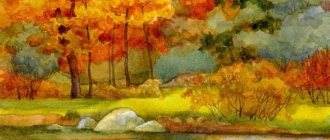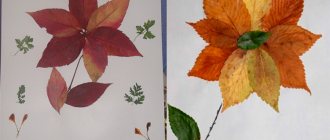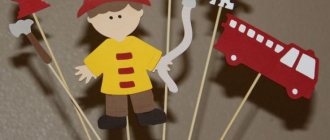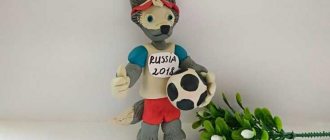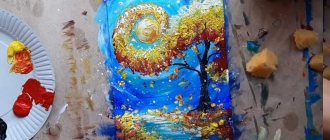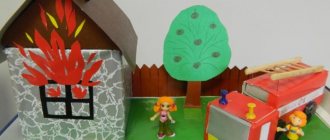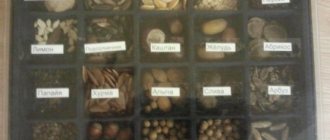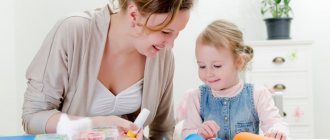Autumn has arrived and brought with it many pleasant moments: gold appeared on the trees and bushes, the sky was covered with fluffy clouds, animals and birds began to scurry about, getting ready to survive the cold and winter cold. And in the fall, students met with their school friends. The children's schedule took up most of the time with lessons and preparation for school. Children from kindergarten have holidays and educational activities dedicated to autumn themes. There they act out skits, go on excursions, and paint autumn as they see it.
That's what we'll talk about today. After all, autumn inspires, I want to talk about how special this time is. Autumn is beautiful, it gives many warm days and amazing moments. This is exactly what is worth drawing!
Drawing on the theme of autumn in pencil
Drawing with a pencil is very simple. Can be used:
- drawing technique (look at the original and repeat every stroke exactly),
- or simply retake the image and transfer it to your own sheet of paper (this is when a blank sheet of paper is superimposed on the picture and drawn with a pencil along the contours and individual details of the image),
- a pencil allows you to convey shadow and light, volume and texture of an object (due to shading).
Well, if something doesn’t work out, you can easily fix it with an eraser.
Pencil drawings can be monochrome or color. How can a simple pencil convey the gold of autumn leaf fall, the crimson of sunset and the aroma of fallen leaves? Easily! If you use pictures typical of autumn, your memory will “complete the picture” itself. For example, a heap of leaves depicted on paper that lies under a tree will remind you how great it is to toss these leaves, how they quietly fall and spin, and how they rustle under your feet when you walk on them.
See examples of drawings for sketching in the gallery:
For reference! A pencil drawing is a work done by:
- with a simple pencil;
- a set of colored pencils;
- one of the colored pencils.
The children themselves can choose how it is convenient for them to draw autumn, and what colors will convey what they see.
Master class on how to draw autumn with a pencil.
Author
1. First, draw a sketch with a simple pencil. For example, an alley in a park, on the sides of which trees appear one after another. A person can walk along the alley under an umbrella.
2. Draw the contours with a felt-tip pen. We erase the pencil.
3. Color with colored pencils, shading or pastels. First we paint the crowns yellow.
4. Then shade one side with light brown.
5. Here and there we apply green spots on the bushes and on the ground. All that remains is to color the silhouette of the girl.
Easy autumn drawings for kindergarten
Drawing is a favorite pastime of even the smallest toddlers. Yes, sometimes it is difficult for children to clearly draw something specific. They lack experience and confidence. That is why this section presents works that are understandable to children. These pictures are easy to repeat. They don't have a lot of small details that toddlers usually miss.
You can use various tools to make leaf prints: corks, paper tubes, toothbrushes, kitchen sponge, cotton swabs, palms, real leaves. Kids love making prints.
The main theme of these drawings is autumn. And to highlight the beauty of this time of year, kids are invited to get acquainted with the bright palette of autumn colors. Children will also appreciate the fact that autumn allows freedom of choice of colors:
- Green;
- Yellow;
- Brown;
- Red;
- Brown.
And also blue, lilac and black. That is, it will not be difficult for kids to draw a real autumn.
Autumn drawing master class for children 2-5 years old.
Author
You will need:
- White pencil
- Thick soft brush
- Gouache
1. Using a white pencil on a blue sheet, draw the silhouette of a tree and grass.
2. Mix yellow paint with a small amount of paint. We put a large amount of paint on the brush and “poke” it on the crown.
3. Add more yellow, and again poke the brush randomly across the crown.
4. Mix white with yellow and ocher (or light brown), and also add green. We draw grass with strokes.
5. Add a darker green to the mixture and paint dark strokes on top of the grass.
6. Mix white, a little brown and blue. We get light gray and draw a birch trunk.
7. Now we apply pure yellow spots to the crown.
8. If desired, draw clouds.
9. Use brown and blue to make stripes on the birch trunk.
Video on how to draw a drawing of “autumn colors” for sketching
For those who like to draw pictures, there is a special section in this selection of autumn pictures. In fact, it is not so easy to copy a landscape from a ready-made sample. Here you need to consider:
- every detail
- sizes of individual items,
- the scale of the whole picture,
- naturalness.
In addition, the choice of color is at your discretion. Therefore, pictures copied from the sample can be safely considered independent works. It is you who bring the landscape to life, showing how brightly the sun shines, how the wind “walks” and how the foliage rustles.
It is worth paying special attention to the selection of colors for the design of the work, the name of which speaks for itself: “autumn colors.” Autumn is diverse, you can’t count the colors and shades in which the sky, bushes, trees and withered grass are painted. The entire color palette can fit on one sheet of paper when it comes to fall colors.
Summary of a lesson on applique from natural materials in the middle group “What autumn brought us”
Elena Ilyushonok
Summary of a lesson on applique from natural materials in the middle group “What autumn brought us”
Summary of a lesson on application from natural materials in the middle group
autumn brought us ”
Ilyushonok Elena Mikhailovna
Topic: autumn brought us ”
teamwork.
— Strengthen the skills of selecting and gluing dry leaves in a certain order;
— Help children solve the problem situation “how to preserve the beauty of autumn ?”
,through the learning process.
- Develop children's creativity and imagination.
- cultivate a caring attitude towards nature ;
- cultivate interest in learning about the world around us;
— cultivate accuracy when working with dry natural material .
Materials : pictures of autumn tree leaves , PVA glue, glue brushes, fabric napkins, white sheets of A4 paper, Whatman paper, easel, pencil shavings, dried leaves, flowers and maple seeds.
Preliminary work: excursion around the territory of the kindergarten, observation of birch and maple trees, collecting autumn leaves by each child and making a herbarium, reading poems by A. S. Pushkin on the autumn theme , didactic games “Which tree is the leaf from?”
,
“Same - different”
, speech games
“Tell me which one?”
, “Choose a beautiful word”, experimentation
“What does a leaf look like?”
.
Drawing on the theme of golden autumn with colors
When it comes to golden autumn, the first thing that comes to mind is yellow with its variety of shades, from sand and lemon to the color of ripe tangerine. But this is not entirely true. And just as gold glitters and shimmers with all the colors of the rainbow when a ray of sun hits it, so the golden season can be not only yellow, but also red, and orange, and bright blue, and deep green. All these colors should form the basis of the work about the foliage shimmering in the last warm rays of the sun.
What will help make the drawing even brighter? Paints! They are the ones who are able to color a picture so as to accurately convey the beauty of autumn days. The paints produce richer colors and are easy to mix and match.
I offer a simple and very beautiful work on the theme “Golden Autumn”.
Author
Materials and tools:
- Acrylic or gouache
- Paper – watercolor or any thick sheet
- Brushes
- Sponge
Stages of work:
1. Using a large brush, pick up thick white paint and draw a circle. We take a little blue with some water and apply it along the edges, mixing a little with white. We continue to draw a circle, expanding it.
2. We should get a circle with darker edges and a light circle in the center. To do this, take blue, without mixing with white, and apply further, moving away from the white center. The blue blends smoothly into the blue to create a beautiful gradient.
3. Draw a horizon line - about ¼ of the sheet. We paint over everything above in a circle.
4. Using horizontal strokes, apply dark blue to the bottom of the sheet.
5. Apply horizontal strokes of yellow color in the center. It mixes a little with blue, turning out greenish.
6. Apply white on top of the yellow with light horizontal touches, going down to the bottom of the sheet.
7. Using a thin brush and liquid black paint, draw a tree trunk from the horizon line. We draw with curved thin lines. Do not forget that the tree itself and each branch are always thicker at the base and thinner towards its tip.
At the base we draw roots going into the ground.
8. Tear off a piece of sponge, pick up rich red, mixing it a little with yellow. By applying a sponge and sharply tearing it off, we apply paint. We set the trajectory as if the leaves are twisting around the moon.
9. Apply foliage to all branches with a sponge. We also apply fallen leaves on the sides below.
Now take a lighter color with a sponge and apply it on top of the red along the edge. In some places we leave a dark red color.
10. Take an even lighter, almost white one and make prints on top.
11. Using a brush, turn the tip of the curled ponytail into a moon.
12. Chaotically apply thick paint and a brush to the falling leaves.
13. The final touch is the stars. Apply semi-liquid white to the brush and splash the paint from the brush onto the drawing with your finger.
14. On the water below we enhance the white strokes - the reflection of the moon.
Making a paper umbrella
A beautiful product, to be sure. To make it you need to prepare:
- double-sided colored paper of any color you like;
- pencil;
- compass;
- scissors;
- adhesive tape or glue stick;
- a piece of thick strong wire.
Let's start making an umbrella.
- Cut out circles from colored paper. They must be the same diameter, and there must be 16 of them in total.
- Fold each circle in half twice.
- We secure each folded circle in the round part with glue.
- Take two folded circles and glue them together. They must be glued together at right angles.
- We glue the remaining folded circles in a circle, thus forming the upper part of the umbrella. The result should be a voluminous umbrella.
- We make a handle from the wire and attach it to the umbrella.
After all the effort, you should end up with such a cute work of art.
The photo below shows all the stages of making an umbrella from colored paper.
To make it even clearer, watch a video on the same topic.
How to draw an autumn landscape for children
What is landscape? In fact, the landscape is not just the nature outside the window. Have you seen how artists are looking for exactly that piece of nature that they will paint on canvas? They should like the view, the angle, and the lighting. Sometimes the character of nature is reflected in the most inconspicuous picture. And this suggests that the artist saw beauty and was able to convey it in all details, color and light.
How can children master this science? Very simple. You need to show your child a couple of pictures of a beautiful autumn landscape and tell him what makes this picture special. For example:
- In one picture there is a tree strewn with golden foliage. Although the artist painted the leaves as a “cloud,” he highlighted several individual leaves as an accent and drew every detail on them.
- On the other there is a river, which is visible from a high hill, already covered with yellow-brown-green foliage. And it is the shine of the river, and the way heavy autumn clouds are reflected in it, that makes the landscape special.
- And on the third everything is simple: trees, bushes, grass. And only how low the sun is and how it sparkles like sunbeams in the tree branches decorates the landscape.
Kids quickly grasp such details. A little training and they will succeed!
Master class on how to draw autumn trees and sky.
Author
I offer a simple option for children. You will need:
- Brushes
- Paints
- Wet wipes
- Plastic bag
1. We make the background with watercolors. Using a large brush, apply transparent yellow, blue, a little red, apply randomly.
2. Take a damp cloth and smear the paint stains, while the cloth absorbs excess water.
3. On a separate sheet of paper, apply random spots of gouache paint. We make them with the touch of a large brush.
4. Apply clean water to the bottom of the sheet. We turn it over and apply our blank of paint stains to the wet part of the sheet, smoothing it with our hands. And we remove the leaf.
5. If you shoot by the top edge in the middle, you will get a static forest, and if you shoot by the uppermost corner, you will get the effect of wind in the forest.
6. It remains to draw the tree trunks. We do this in two shades of brown to make the picture more voluminous.
7. Let's draw rain. Take a wide brush and remove excess water from it. We put white gouache on the tip and apply strokes with diagonal light movements.
8. Using a thin brush and dark gouache we depict a key of birds that fly away to the south.
9. We put a simple plastic bag on our hand and apply gouache on the bag in spots. Let's crumple the bag a little in our hand.
Now we apply this package in different places of our trees with sharp jerky movements. This is how we get leaves. The forest becomes more alive.
Drawings of autumn leaves and an autumn bouquet for school
Trunks and branches of trees and bushes remain throughout the year: in winter, summer, and spring. But it is the leaves that eloquently indicate the time of year and the mood of nature. Poems are written about the gold of autumn leaves, they are so beautiful. The leaves are incredibly beautiful all together on the tree. And every single leaf is incredible.
It is very convenient to make prints of leaves collected in the forest:
Author https://www.youtube.com/watch?v=TOlGIlRSYFI
1. Paint is applied to the leaf, it’s beautiful if you make a slight gradient, that is, paint the leaf yellow on top, then orange, and green at the base.
2. Turn the leaf over and print it well on the paper.
3. It’s so simple and beautiful, even without knowing how to draw, you can convey the autumn mood on paper.
4. Spray the bottom with orange paint using a toothbrush.
5. At the top we make the sky in the same way. We finish drawing tree trunks, bushes, fallen leaves and birds.
Another simple option. Place different collected leaves under the white sheet. Shade the top with crayons or simply outline all the veins.
Oak, maple, birch, ash and acacia leaves. They are all different shapes and color differently with the arrival of autumn. For example, oak leaves remain green for a long time until they begin to turn brown at the edges. Ash is the first to welcome autumn with its bright yellowness. The maple turns red. A strong tree, and it has such bright colors.
Pictures from this collection will help your children better prepare for school and kindergarten competitions and assignments. And the kids themselves will be able to better understand and “see” how wonderful this time is! Preparations for school continue. By subscribing, become a regular visitor to the site so that creative activities are easier and more interesting for your children.
Progress of the lesson.
In the group , leaves are laid out on the table, and a large sheet of Whatman paper is on the easel. Children look at the beautiful leaves laid out on the table and admire them. They describe them, remember how they collected leaves in the garden and on walks with their parents.
Educator. Guys, do you know that you can create paintings from these leaves? Do you want to try becoming an artist?
Children. Yes! Let's try!
Educator. Guys, please tell me what the leaves look like?
Children. Trees, birds, bushes (etc.)
Educator. Right! Now you will choose your leaves and we will glue them onto the sheet.
Using PVA glue and a brush, children glue dried leaves onto whatman paper. The teacher helps and guides the children.
Educator. Guys, look how beautiful it is! Now you can make a carpet of leaves.
Educator. How beautiful it turned out! Please take a look, guys, what else are we missing in our picture?
Educator. Right! See how you can make birds from maple seeds.
Next, the teacher shows how to make a “birdie”
, PVA glue is applied to the maple seeds with a brush and the two parts are connected together, with the centers facing each other. The teacher pronounces all his actions. Then the children create their own birds.
Educator. Guys! Look what a beautiful picture we got!
You guys are great! This is how we preserved the beauty of autumn !
In their free time during the day, some children created individual works with the help of the teacher.
These are the pictures we got!
Thank you for your attention!
“What autumn brought us.” Photo report on the exhibition of crafts made from natural materials. The autumn exhibition has become traditional in our kindergarten. Every year, autumn brings many bright impressions and ideas that inspire us. Photo report on the exhibition of crafts made from natural materials in the middle group “Golden Autumn” Popova Valentina Photo report on the exhibition of crafts made from natural materials in the middle group “Golden Autumn” Here comes golden autumn to visit. Summary of GCD on appliqué made from natural materials in the middle group. Collective work “Autumn Cheerful Hedgehog” Summary of educational activities for visual activities. Application made of natural material in the middle group. Collective work “Autumn cheerful. Summary of the educational activity on appliqué from natural materials in the middle group “Cheerful Hedgehog” On the Internet I came across wonderful works of hedgehogs and decided to make them together with the children. “Cheerful Hedgehog” is perfect.
Source
